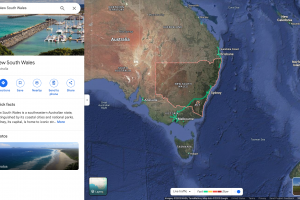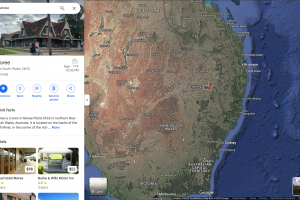Japanese Encephalitis Outbreaks
Japanese Encephalitis Outbreaks April 2025
According to the World Health Organization (WHO), the Japanese encephalitis virus (JEV) is a flavivirus spread by mosquitoes, primarily Culex tritaeniorhynchus. As of March 29, 2025, JEV is the leading cause of viral encephalitis in twenty-four countries in the WHO South-East Asia and Western Pacific Regions, exposing more than 3 billion people to infection risks. Most Japanese encephalitis (JE) cases occur in children below 15 years of age. In February 2025, the WHO published a technical brief: Encephalitis: global threats, trends, and public health implications.
As of March 15, 2025, the U.S. Centers for Disease Control and Prevention (CDC) identified countries reporting JEV cases. JE infections cause approximately 13,600–20,400 deaths in people annually, primarily children. JE survivors are estimated to live normally, but 49% of JE patients report neurological sequelae. The CDC states that the risk for JE varies based on destination, accommodations, activities, trip duration, and travel season. Pigs play an essential role in the natural cycle and serve as an amplifier host since they allow virus multiplication manifold without suffering from disease. Man is a dead-end host in the transmission cycle, and there is no human-to-human transmission of JE.
On February 22, 2025, the 12th anniversary of World Encephalitis Awareness Day was celebrated.
Japanese Encephalitis in the United States
JEV was confirmed in the United States in the 1980s when the exotic mosquito species and secondary JEV vector, Aedes albopictus, was introduced into the country. A risk assessment conducted in 2019 considered the potential mechanisms of introducing JEV into the U.S. It concluded that an infected adult mosquito had a high risk of introduction on passenger aircraft. Geographically, the risk of JE introduction into the U.S. may be highest in California due to the frequency of international arrivals (Aug. 2024) from Asia (LA County) and the abundance of Culex vectors and avian hosts. In July 2005, one JE case was reported to LA County regarding a California resident who traveled to the Philippines. One Japanese encephalitis vaccine (IXIARO) is U.S. FDA-approved and recommended for travelers in March 2025.
Japanese Encephalitis in Australia
Australia's National Notifiable Disease Surveillance System dashboard has reported JEV cases from 2002 to 2025. The WHO reported various JEV cases across Australia, including Queensland, New South Wales, South Australia, Victoria, the Australian Capital Territory, Tasmania, Western Australia, the Northern Territory, and parts of the Torres Strait region. Australia's government declared a JEV outbreak of National Significance in March 2022. Since January 2021, 46 people in Australia have been infected with JEV, resulting in seven deaths. In June 2023, the Joint National Japanese Encephalitis Virus Outbreak Response Plan (JEV Outbreak Plan) became the first Australian Response Plan for Japanese Encephalitis.
On March 14, 2025, the fourth JE-related fatality was reported since the virus was first detected in NSW in 2022. On February 15, 2025, a man likely acquired his JE infection while camping in the Murrumbidgee region in NSW. In January 2025, NSW Health listed Tamworth, Gunnedah, Moree, Narrabri, Gwydir, Inverell, Liverpool Plains, Tenterfield, and Upper Hunter local government areas as "high JE concern." JE virus was previously detected in mosquitoes in December 2024 in the Griffith area and feral pigs in the Narromine Shire local government area. No confirmed human cases of JEV have been acquired in NSW since October 2022. Between 2021 and 2022, 13 JEV cases were reported in NSW.
Queensland health authorities reported in March 2025 that JEV was detected for the first time in mosquitoes collected in Brisbane's eastern suburbs. In January 2025, Queensland recorded its first locally acquired human case of JEV since 2022. This person was likely infected in the Darling Downs region near Goondiwindi. The JEV vaccine is available at over 100 vaccination providers across Queensland.
On January 20, 2025, the Victoria Department of Health confirmed that a human case of JE had been identified in a resident of northern Victoria, the first case in Victoria this year. Residents and people visiting northern Victoria, mainly inland riverine regions and near the Murray River, are potentially at higher risk of infection and should take measures to prevent mosquito bites. In Victoria, the JE vaccine is free of charge for specific groups at higher risk of exposure to the virus.
QIMR Berghofer senior researchers reported in May 2024 that the new JEV virus strain (genotype 4) impact on the brain is consistent with the seven human fatalities during the 2022 outbreak, which involved 44 confirmed human cases across Victoria, New South Wales, South Australia, Northern Territory, and Queensland. The findings of the two studies (May 2024), taken together with the broad geographic spread of human infections and infected piggeries over a relatively short period, have shown that the 2022 JEV outbreak was more extensive than first thought. The health department says JE vaccination is recommended for travelers spending one month or more in endemic areas in Asia and Papua New Guinea during the virus transmission season. JE vaccination is recommended for Torres Straits of the outer islands in residents living or working on the outer islands of Torres Strait for 30 days or more during the wet season. People who are at ongoing risk of acquiring JE may need booster doses.
In December 2022, the U.S. CDC updated an Alert—Level 2, Practice Enhanced Precautions—regarding the JE outbreak in eastern and southeastern Australia.
Japanese Encephalitis in Canada
The Canadian government says the risk of JEV for travelers is low, especially for those visiting cities. However, there is a higher risk of infection if they visit rural areas for more extended periods and participate in outdoor activities.
Japanese Encephalitis in Europe
The European CDC published a study in 2023 that concluded that the environmental conditions in the European Union are expected to be suitable for the Japanese encephalitis virus to circulate.
Japanese Encephalitis in India
The first evidence of the JE virus's presence in India dates back to 195,2 when the first case was reported. In 2024, it continued to pose a significant public health problem. According to data from the Integrated Disease Surveillance Programme, 1,548 JE cases were reported from 24 states and Union Territories. About 925 cases were detected in Assam alone.
In 2023, 1,320 JE cases were reported, compared to 1,271 in 2022. India's National Center for Vector Borne Diseases Control (NCVBDC) confirmed in 2023 that adult JE vaccinations started in 42 districts of three states with high JE incidence: Assam (9 districts), Uttar Pradesh (7 districts), and West Bengal (26 districts). In September 2024, the media reported that a child in Jabalpur died due to JE infection.
Japanese Encephalitis in Indonesia
The U.S. CDC reports JE cases from many Indonesian islands, including Bali, Java, Kalimantan, Nusa Tenggara, Papua, and Sumatra. The WHO has actively supported Indonesia's Ministry of Health with interventions to control JEV infection, such as preparing to introduce JEV vaccination in new endemic provinces, focusing on West Kalimantan.
Japanese Encephalitis in Japan
Sporadic JE cases are reported from all of Japan's islands except Hokkaido.
Japanese Encephalitis in Papua New Guinea
The surveillance and detection of Japanese encephalitis in Papua New Guinea (PNG) have been confirmed. The U.S. CDC recommends considering JE vaccination for travelers spending less than a month in areas with Japanese encephalitis but who will be doing engaging activities that increase the risk of infection, such as visiting rural areas, hiking or camping, or staying in places without air conditioning, screens, or bed nets.
Japanese Encephalitis in the Philippines
Human, animal, and mosquito studies indicate transmission in 32 provinces of the Philippines.
Japanese Encephalitis in Nepal
About 12.5 million people in Nepal are at high risk of JE infection. As of September 2024, twenty-nine districts in Nepal, including those in the Kathmandu Valley, have reported infection from the deadly virus, while eight districts, Kailali, Kapilvastu, Palpa, Chitwan, Rautahat, Sarlahi, Siraha, and Sunsari, have reported deaths from the infection. In September 2024, 17 people died, and 63 others had been infected with the JE virus since June 2024. In 2005, JE infections killed nearly 2,000 people in Nepal's Tarai region.
Japanese Encephalitis in South Korea
The U.S. CDC says Japanese encephalitis was a significant public health concern in South Korea until the late 1960s, with several thousand cases reported annually. In 2024, the Korea Disease Control and Prevention Agency (KDCA) reported 21 locally transmitted Japanese encephalitis cases. The KCDC reported that in 2018, JE surveillance data showed an average of 20 JE cases yearly.
Japanese Encephalitis in Thailand
The highest number of disease cases has been reported in Thailand's Chiang Mai Valley.
Japanese Encephalitis in Taiwan
In Taiwan, JE has been categorized as a mandatory notifiable infectious disease since 1955. As of May 2024, CNA reported Taiwan recorded two cases of JE in Kaohsiung, including one death, the first in 2024, according to the Centers for Disease Control.
Japanese Encephalitis in the United Kingdom
In England, Wales, and Northern Ireland (EWNI), no cases of Japanese encephalitis were reported in 2024. The most recently reported case was in 2023. A JE vaccine is available in the UK; however, this is only advised for travellers at increased risk of infection.
Murray Valley Encephalitis in Australia
As of March 2025, three cases of Murray Valley encephalitis had been reported in northern Western Australia, specifically in the Pilbara and Kimberley regions.





